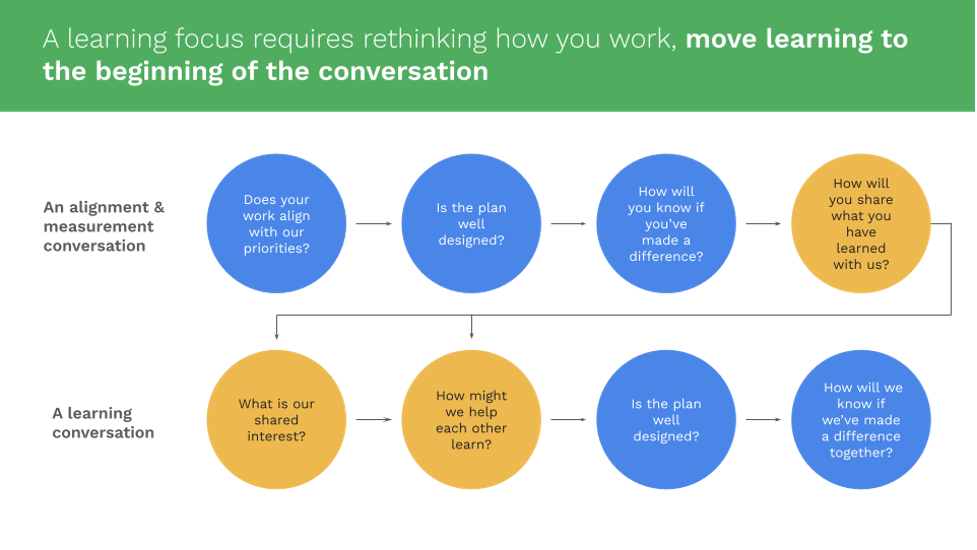Hi, we are Andrew Taylor and Ben Liadsky from Taylor Newberry Consulting. In the past, we’ve written about how nonprofits and funders can develop an evaluation relationship that prioritizes shared learning. In other words, our work has focused on helping nonprofits and funders to better understand each other and to develop the skill sets needed to effectively engage in conversations about what really matters when it comes to evaluation.
In talking with funders during the pandemic, one of the things we’ve heard a lot more about is the desire to provide more flexibility to their grant recipients, recognizing that they’ve got a lot on their hands during a stressful time. Yet, funders still have a commitment to learning and want to ensure that they are able to really understand the impact their dollars have made. We have been exploring ways to make space for more collaborative and trust-based conversations about learning and evaluation plans. Instead of beginning the conversation with a question like: how are you going to measure your outcomes, we’ve found conversations go better when they start with a question like: what do we want to learn together?

Image source: Achieving Greater Impact by Starting with Learning
Rad Resources
To help facilitate these types of conversations, and with support from the Wellspring Philanthropic Fund, we created the resource: Developing your learning and evaluation plan: A workbook to support your grant recipients.
This workbook provides editable worksheets to give space for grant recipients to tell their funder what really matters to them in their evaluation after the pressure of securing funding is off. The first worksheet is designed for the funder to reaffirm their commitment to their grant recipient and communicate some of their values and evaluation goals. We believe that by going first, funders help to create the conditions for information to flow in both directions as opposed to a one-directional data collection exercise from your grant recipient to you. The following five worksheets are designed for the grant recipients and touch on topics such as reflecting on previous lessons learned, clarifying learning goals, thinking about short-term outcomes, data gathering, and building learning habits.
Additionally, The Trust-based Philanthropy Project has outlined several practices and tips, such as “Simplify and streamline paperwork” and “Be transparent and responsive,” that can help to further support funders looking to engage in more reciprocal learning.
Even for funders who don’t consider themselves to be practicing trust-based philanthropy, a resource like Exponent’s Great Funder-Nonprofit Relationships Toolkit offers more great tips for how to create the conditions for mutual learning.
Lessons Learned
We’ve been pleased to see that many funders are looking at how they can support their grant recipients in new and different ways particularly as many cope with additional challenges brought on by the pandemic and the fight for racial justice. When it comes to evaluation, we still see lots of opportunity for funders to provide support to their grant recipients to help clarify and shine a light on what’s really going on. Being flexible doesn’t need to mean that evaluation should be deprioritized, but rather that a more nuanced approach to supporting good evaluation and learning might be needed.
Do you have questions, concerns, kudos, or content to extend this aea365 contribution? Please add them in the comments section for this post on the aea365 webpage so that we may enrich our community of practice. Would you like to submit an aea365 Tip? Please send a note of interest to aea365@eval.org . aea365 is sponsored by the American Evaluation Association and provides a Tip-a-Day by and for evaluators. The views and opinions expressed on the AEA365 blog are solely those of the original authors and other contributors. These views and opinions do not necessarily represent those of the American Evaluation Association, and/or any/all contributors to this site.
